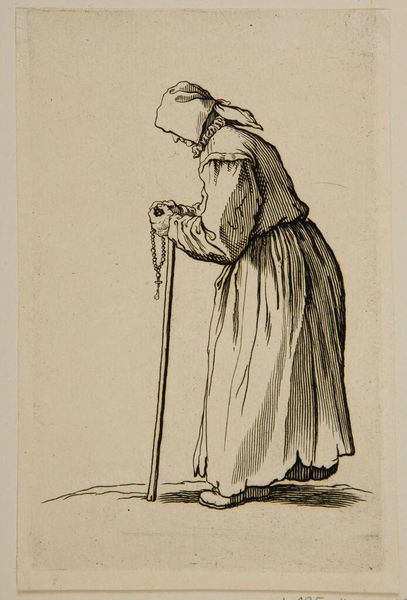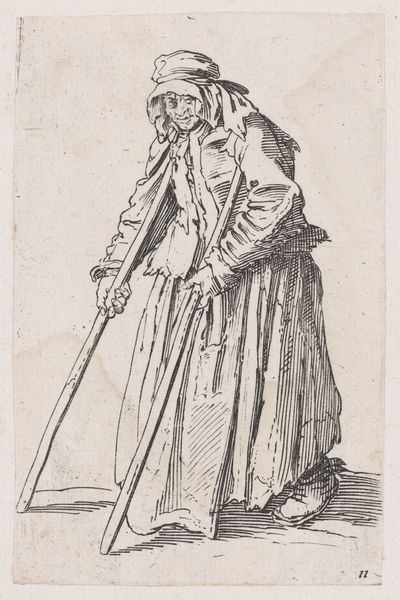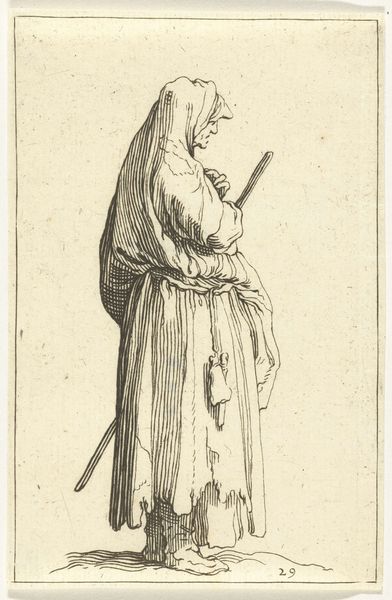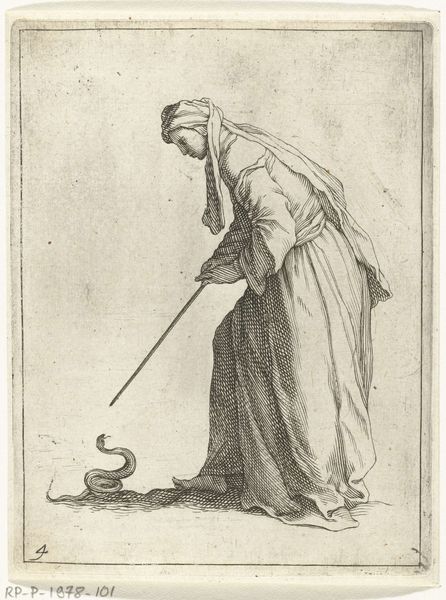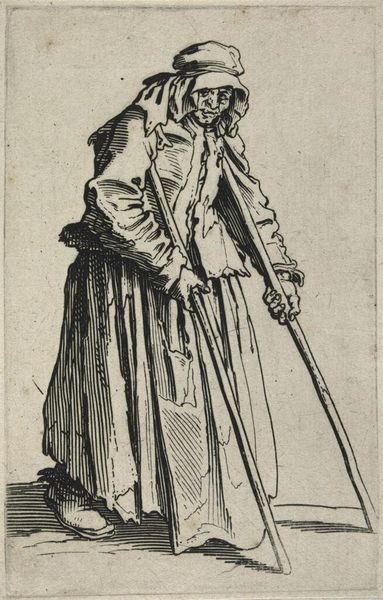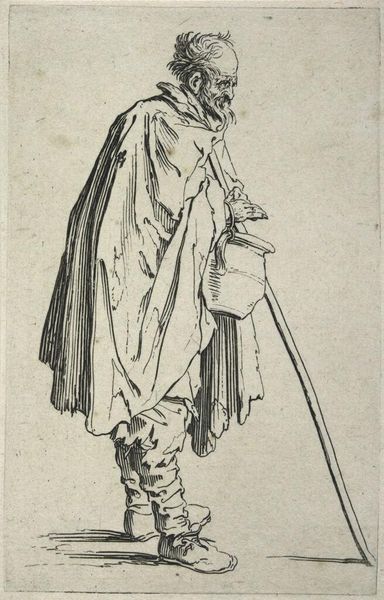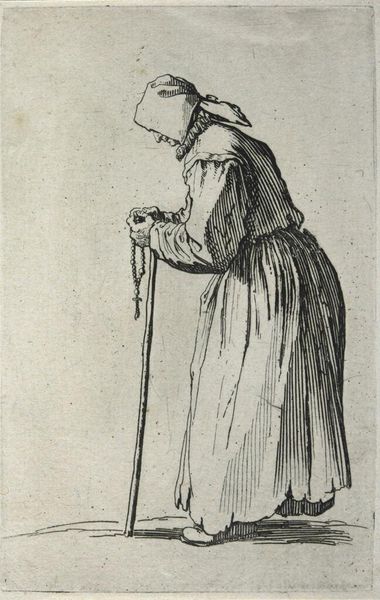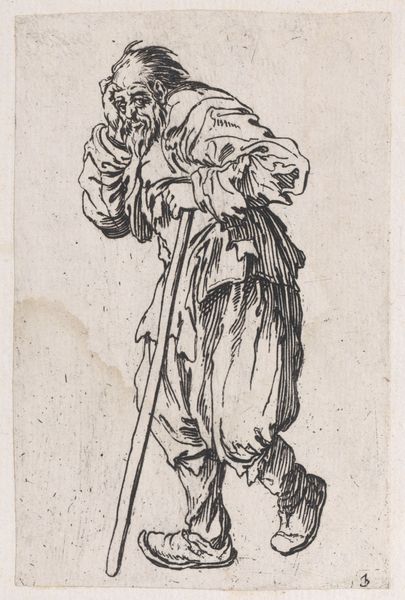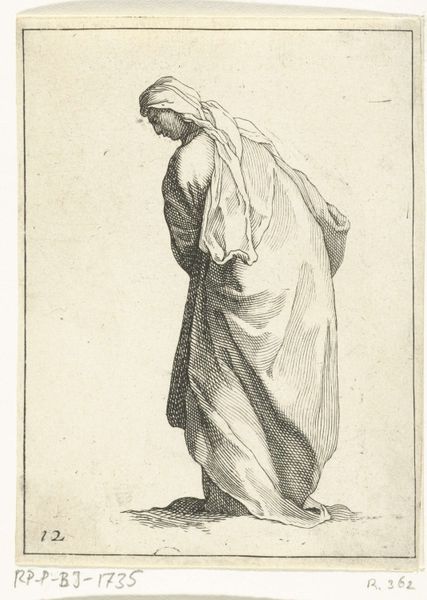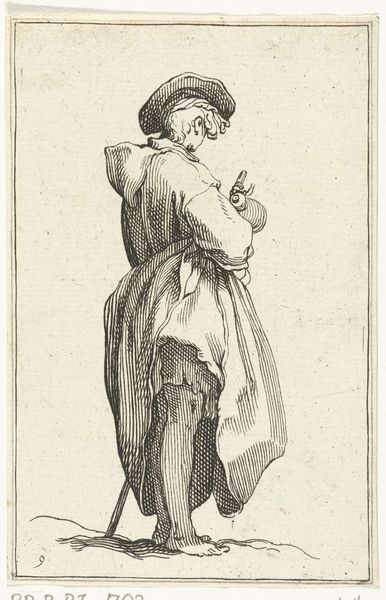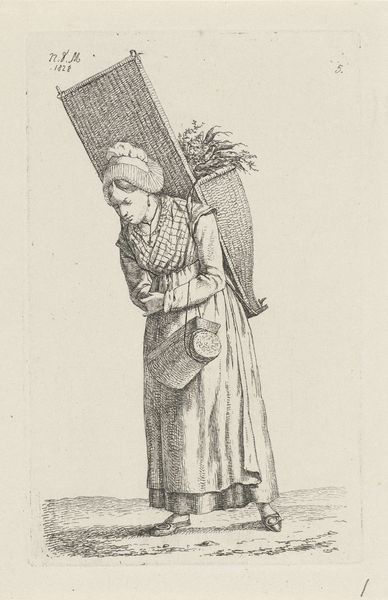
drawing, pen
#
portrait
#
drawing
#
baroque
#
dutch-golden-age
#
pen-ink sketch
#
pen
#
genre-painting
Dimensions: height 130 mm, width 80 mm
Copyright: Rijks Museum: Open Domain
Curator: Here we have "Young Farmer with Long Pipe," a drawing by Frederick Bloemaert, made sometime after 1635. It's done in pen. What catches your eye first about this piece? Editor: It's strikingly melancholic, wouldn't you say? He seems weighed down, though the lines are clean and crisp. His gaze is cast downwards. Curator: Indeed. Bloemaert was quite skilled at capturing human emotion, often reflecting on universal experiences. The pipe, common in genre painting, is here imbued with a sense of quiet contemplation. This reflects an interesting aspect of peasant imagery becoming acceptable—even desirable—subject matter within the Dutch Golden Age, often tied with national identity. Editor: And this peasant archetype—notice how the weight of the fabric suggests an almost classical form, ennobling his bearing. I also see elements of pastoral simplicity meeting emerging capitalist culture in this choice of subject. This kind of idealized depiction definitely has a sociopolitical agenda behind it. Curator: I agree entirely. Beyond just depicting the farmer, Bloemaert evokes a certain sense of introspection, tapping into emotions connected with simple life, yet tinged with emerging realities in the Dutch Republic. He does it through minute detailing with the pen strokes giving texture to fabric folds, making you feel the weight. And while the subject seems lost in contemplation, notice how the staff seems rooted firmly to the earth beneath his feet, anchoring him to his context. Editor: A carefully placed symbol, that rooting. He looks as though he’s communing with nature while subtly reinforcing the stability of the societal structure. It seems deceptively simple on first glance, this farmer with a pipe and a staff, but then layers of the social context of the Dutch Golden Age rise from it like smoke. Curator: Precisely. This work showcases a dialogue of class, status, and individual introspection within the social theatre of the time. It reminds us that even seemingly simple subjects can unveil so much if we lend our eyes and minds to them. Editor: I agree, I leave feeling it makes us remember these rural communities and figures weren't merely passive figures on a landscape, they actively helped shape and negotiate societal values in ways we can easily overlook.
Comments
No comments
Be the first to comment and join the conversation on the ultimate creative platform.
